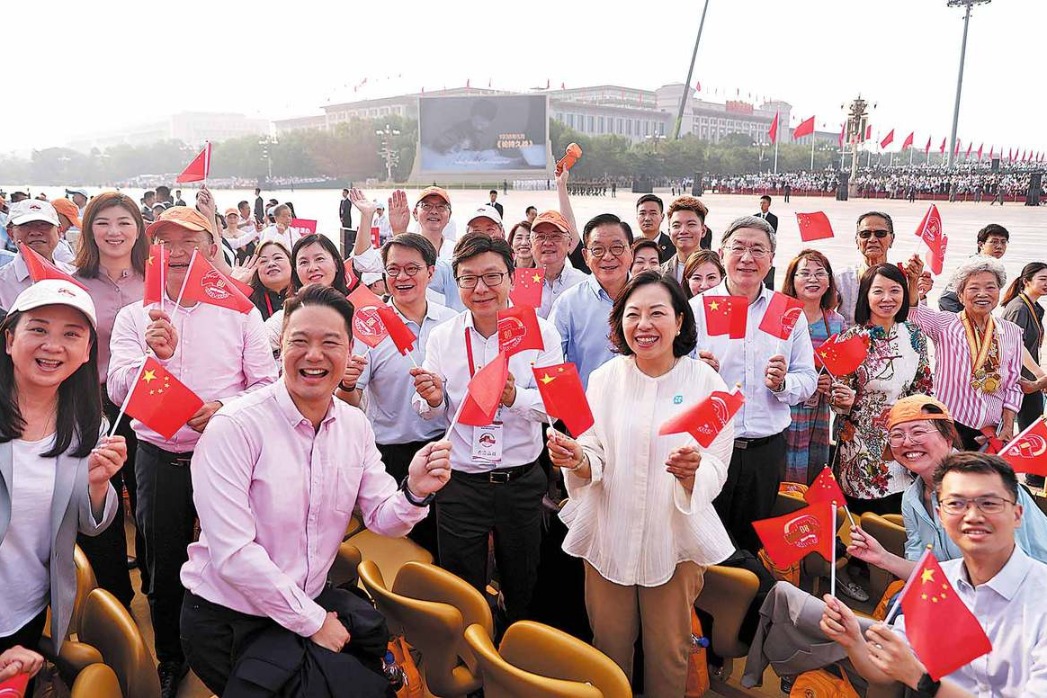China achieves scientific literacy target ahead of schedule

China has made significant strides in science popularization during the 14th Five-Year Plan period (2021-2025), achieving its scientific literacy target for citizens ahead of schedule. This has laid a solid foundation for building a high-quality, innovative talent pool and promoting high-level scientific and technological self-reliance, officials said on Thursday.
"By 2024, the proportion of Chinese citizens possessing scientific literacy rose to 15.37 percent, marking a 4.81 percentage point increase since 2020 and showcasing an accelerating improvement trend. The 2025 goal of surpassing 15 percent was reached ahead of schedule," said Feng Shenhong, deputy chairman of the China Association for Science and Technology, at a news conference in Beijing.
Feng said this marked significant progress in Chinese citizens' scientific literacy, following which it met the basic requirement for China to become an innovative country in 2020.
Last year, nearly half of Chinese citizens had basic scientific literacy, corresponding to around 440 million people aged between 18 and 69. "This has solidified the labor force foundation for building a large, high-quality, innovative workforce and promoting high-level scientific and technological self-reliance and strength," he added.
Feng emphasized that improving the population's scientific literacy is crucial for building a large, innovative workforce and rapidly transforming scientific achievements, and China has prioritized science popularization on an equal footing with technological innovation to foster development.
To further enhance citizens' scientific literacy, the newly amended Law on the Popularization of Science and Technology, introduced in December, designates September as National Science Popularization Month, with this September being the first observance.
Ni Zhiyu, head of the China Association for Science and Technology's department of science and technology popularization, said the predecessor of the National Science Popularization Month is the National Science Popularization Day, which was held annually for 22 years. This transition not only extends the duration but also reshapes the content and significance.
Themed "science transforms lives, innovation secures the future", this year's National Science Popularization Month highlights cutting-edge technology, diverse stakeholder participation, public benefits, innovative demonstrations, and the integration of online and offline activities, Ni added.
Feng also pointed out that China's science popularization infrastructure is improving, with a more complete network of science and technology museums and enhanced informatization. Services now cover urban and rural areas, span across industries, and operate both online and offline, making grassroots services more balanced and inclusive.
By the end of last year, there were 548 science and technology museums nationwide, with the coverage rate in prefecture-level administrative regions rising to 77 percent. The eastern, central, and western regions have 171, 166, and 211 museums, respectively, indicating a more balanced regional distribution, according to Ni.
Notably, 203 new science and technology museums have been added since 2021, with county-level museums accounting for 158 of these, becoming the main force in new constructions, Ni added.
In addition, upholding the concept of building a community with a shared future for humanity, China has initiated a series of international cooperation projects to pave the way for win-win cooperation in promoting technological exchanges, Feng said.
These initiatives involve the international touring exhibitions of mobile science museums, which have been ongoing since 2018. The exhibitions, integrating information on cutting-edge fields such as basic science, information technology, aerospace, and artificial intelligence, have toured in five countries of Myanmar, Cambodia, Russia, Malaysia, and Nepal, receiving widespread acknowledgement from local people, especially the youth, he said.
He also mentioned the science and technology backyard project, which has extended its service model — integrating scientific research, technical training, and demonstration and promotion — to countries such as Brazil, Kenya, Ethiopia, Tanzania, and Malawi. This project has been recognized by the United Nations Food and Agriculture Organization as a model case for promotion among member countries.
"In the face of significant contemporary challenges, science popularization must take on greater responsibilities and missions," Feng said.
"It should establish an innovative cultural foundation that supports high-level scientific and technological self-reliance, provide high-quality talent to foster and expand new quality productive forces, create a scientific cultural atmosphere to promote a civilized and harmonious society, and contribute Chinese wisdom and strength to enhance the exchange and mutual learning among human civilizations," he added.
- China achieves scientific literacy target ahead of schedule
- Discover the real China
- China-SCO Science-Technology Innovation Cooperation Center unveiled in Qingdao
- Taiwan people express pride after parade
- Documentary spotlights a daring World War II rescue operation in Hainan
- Buddhist body backs Shaolin Temple's former abbot's investigation





































